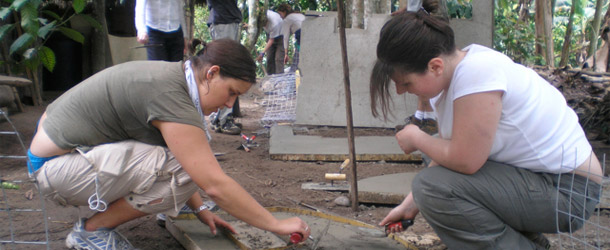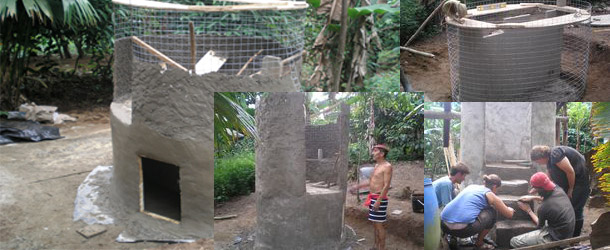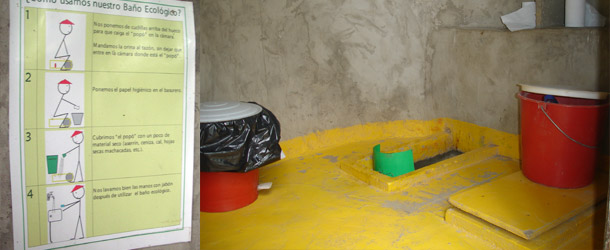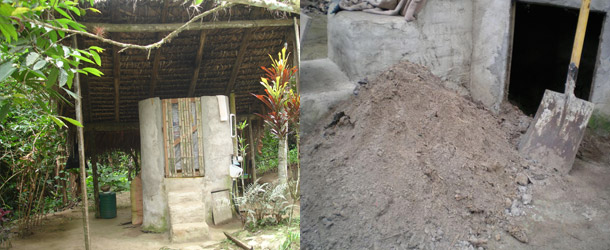Ecological Sanitation
Ecological Sanitation for the Tsa'chila culture
In September 2007 Yanapuma carried out its first ecological sanitation project. The project resulted from a request from Alfonso Aguavil, head of the cultural group Shinopi Bolón in Bua. He wanted to install an ecological system of sanitation at the center rather than the traditional water closet design that relies on a septic tank, or the deep pit style of latrine. This was something that Yanapuma knew nothing about at that time, but we set about researching and networking to come up with a suitable design.
We settled on a "ferrocement" construction method, which allowed us to create a structure with a very thin wall and curved surfaces that fit better with the traditional Tsa'chila style and the location. The toilets are ecological dry toilets, relying on separation of the urine from the faeces. The urine is piped away to plants surrounding the ecotoilet, while the faeces are covered with a light layer of ash, dry earth or calcium. This begins a process of evaporation very quickly and avoids having flies and other pests lay eggs there. The hard material dessicates quickly and builds up layer on layer over a six-month period.
Through conversations with the Tsa'chila we settled on a squat design for the ecotoilets rather than installing a toilet for sitting on. The Tsa'chila said that they were most used to squatting and this seemed the most culturally-appropriate method for them.
Each ecotoilet is constructed with two chambers underneath. When the first chamber is full, a top is put over the hole, and the second chamber is un-tapped so that this can be used instead. Over a period of six months the material remains in a dessicated state during which time the vast majority of any contaminant parasites and other harmful organisms are killed off. Tests carried out after a six-month period revealed a very low count of dangerous parasites and bacteria, well within the range for being able to safely handle the material and apply to cacao and other fruiting trees. We were worried from the start of the project that the humidity of the Santo Domingo region would prevent adequate dessication, but it turned out in the end that the chambers were very efficient with their design for cross-ventilation. We had also included a vent pipe to take any noxious smells out above head height on two of the three units that we constructed, but this proved to have been an unnecessary addition, as the third unit functioned perfectly well without the pipe, with no appreciable problem with odors.
The three ecotoilets were built with the aid of a group of seven volunteers from the UK. We constructed the three units in three weeks. The recipents of each unit constructed a roof of traditional materials. Ferrocement turns out to be a bit of a labor-intensive method, and probably not a good system for mass production of this kind of unit.
You can read about Bua here.




